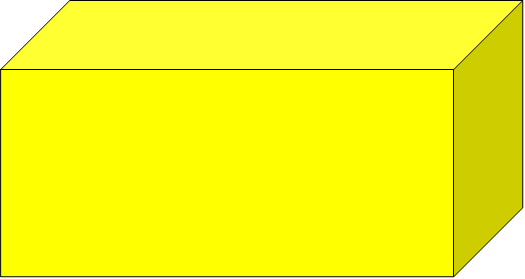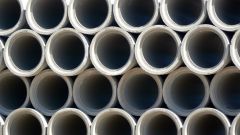You will need
- - the range;
- calculator.
Instruction
1
If the student is trying to calculate the volume of a rectangle, specify: what kind of specific figure in question – the rectangle or its volumetric equivalent, rectangular parallelepiped. Find out: what is required to find the conditions of the problem – the volume, area or length. In addition, find out what part of the figure is a view of the whole figure, face, edge, vertex, face or cross-section plane.
2
To calculate the volume of a rectangular container, multiply between its length, width and height (thickness). That is, use the formula:
V = a * b * c,
where: a, b and C are its length, width and height of the box (respectively), and V is its volume.
All their sides are pre-reduced to one unit, then the volume of the parallelepiped obtained in relevant "cubic" units.
V = a * b * c,
where: a, b and C are its length, width and height of the box (respectively), and V is its volume.
All their sides are pre-reduced to one unit, then the volume of the parallelepiped obtained in relevant "cubic" units.
3
Example.
What will be the capacity of the water tank having dimensions:
length – 2 meters;
width – 1 meter 50 centimeters;
height – 200 cm.
Solution:
1. Given the lengths of the sides to meters: 2; 1,5; 2.
2. Multiply the resulting numbers: 2 * 1,5 * 2 = 6 (cubic meters).
What will be the capacity of the water tank having dimensions:
length – 2 meters;
width – 1 meter 50 centimeters;
height – 200 cm.
Solution:
1. Given the lengths of the sides to meters: 2; 1,5; 2.
2. Multiply the resulting numbers: 2 * 1,5 * 2 = 6 (cubic meters).
4
If we are in the task is still on the rectangle, you probably want to calculate its area. To do this, simply multiply the length of the rectangle by its width. That is, apply the formula:
S = a * b,
where:
a and b are the lengths of the sides of the rectangle
S – the area of a rectangle.
Use this same formula if the problem is considered a face of a rectangular parallelepiped according to the definition, it also has the shape of a rectangle.
S = a * b,
where:
a and b are the lengths of the sides of the rectangle
S – the area of a rectangle.
Use this same formula if the problem is considered a face of a rectangular parallelepiped according to the definition, it also has the shape of a rectangle.
5
Example.
The volume of a cube is 27 m3. What is the area of the rectangle formed by the face of the cube?
Solution.
The edge length of the cube (which is also a rectangular parallelepiped) is equal to the cubic root of its volume, i.e. 3 m. Therefore, the area of one side (a square) is equal to 3 * 3 = 9 m2.
The volume of a cube is 27 m3. What is the area of the rectangle formed by the face of the cube?
Solution.
The edge length of the cube (which is also a rectangular parallelepiped) is equal to the cubic root of its volume, i.e. 3 m. Therefore, the area of one side (a square) is equal to 3 * 3 = 9 m2.



